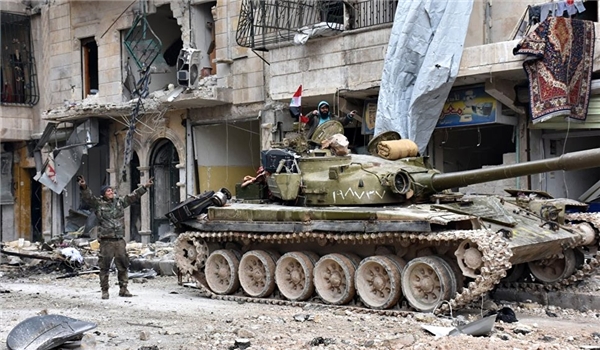Syrian Army Preparing for Imminent Operation Southwest of Aleppo


A large number army soldiers, fresh fighters of Iraqi al-Nujaba movement and the Palestinian Liwa al-Quds along with tens of tanks, heavy artillery units and missile launchers were forwarded to the town of al-Hadhar and surrounding areas of the villages of Khalasa, al-Qarasi and al-Arabaeeneh hills to take part in an imminent operation against Jeish al-Fatah.
The Syrian army has also dispatched hundreds of fresh forces to the Southwestern countryside of Aleppo city to take back al-Rasheddeen 4 and 5.
The army gave its final ultimatum to the terrorists still remaining in the Southwestern regions of Aleppo and urged them to leave these regions.
The army gave the terrorists a three-day-long ultimatum starting on Monday to fully surrender areas under their control and leave the region.
Syrian Army General Staff warned Jeish al-Fatah coalition of terrorist groups deployed in the neighborhoods of Rashedeen 4 and 5 to hand these neighborhoods over to the Syrian government in next 72 hours, according to the source.
The army is about to run a clean-up operation in the Southwestern countryside of Aleppo city after the government forces’ recent victories in the Eastern districts of the city and repelling two large-scale operation of militants several days before the full liberation of Aleppo city.







